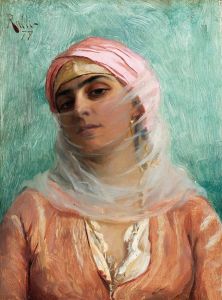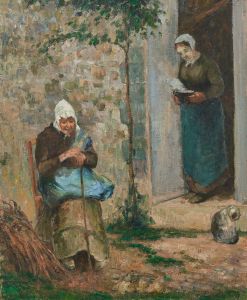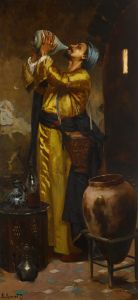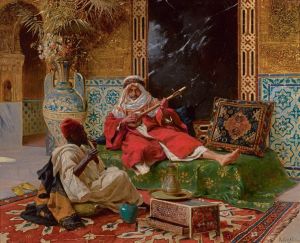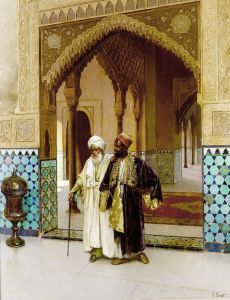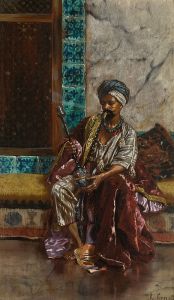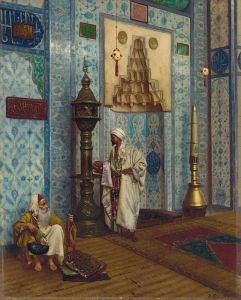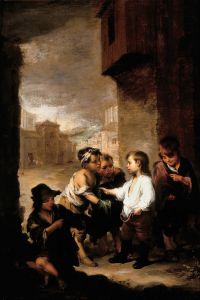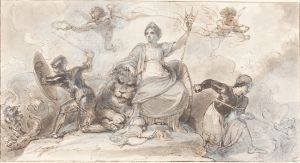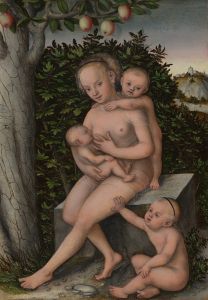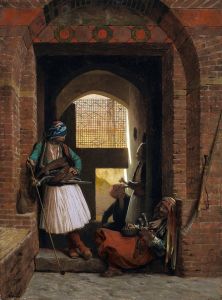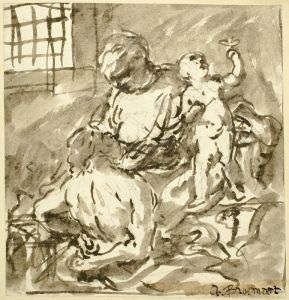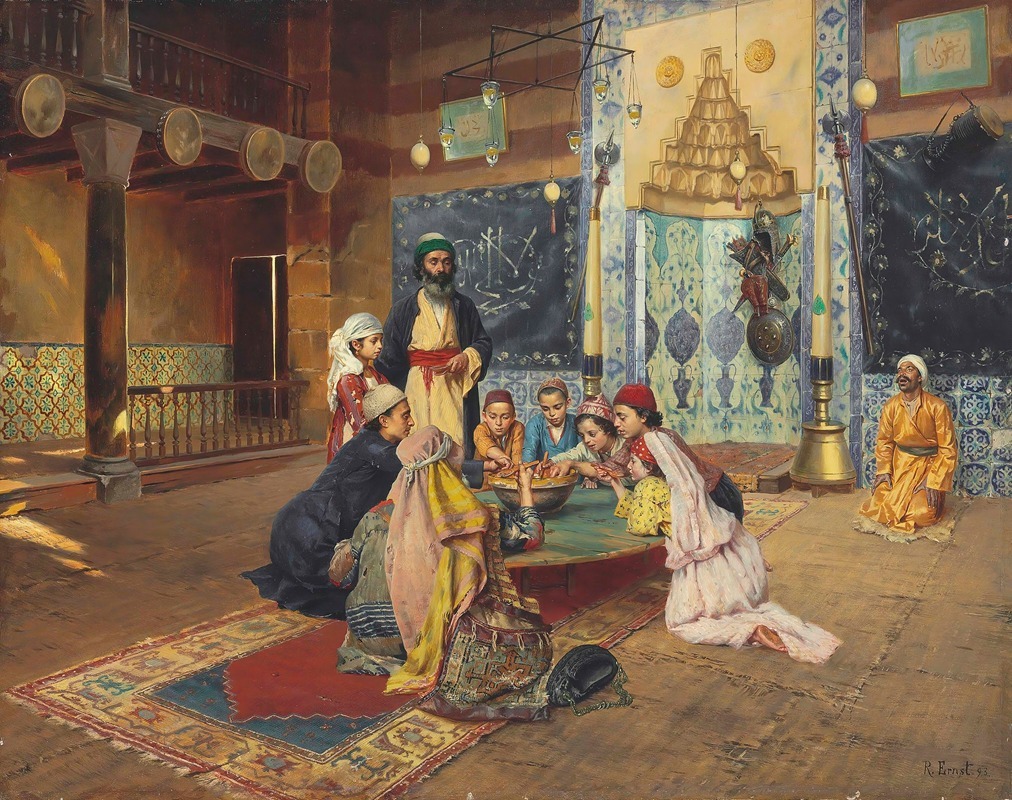
La Charité chez les derviches à Scutari
A hand-painted replica of Rudolf Ernst’s masterpiece La Charité chez les derviches à Scutari, meticulously crafted by professional artists to capture the true essence of the original. Each piece is created with museum-quality canvas and rare mineral pigments, carefully painted by experienced artists with delicate brushstrokes and rich, layered colors to perfectly recreate the texture of the original artwork. Unlike machine-printed reproductions, this hand-painted version brings the painting to life, infused with the artist’s emotions and skill in every stroke. Whether for personal collection or home decoration, it instantly elevates the artistic atmosphere of any space.
Rudolf Ernst was an Austrian painter known for his Orientalist works, which often depicted scenes from the Middle East and North Africa. One of his notable paintings is "La Charité chez les derviches à Scutari," which translates to "Charity among the Dervishes at Scutari." This painting exemplifies Ernst's fascination with the exotic and his meticulous attention to detail, characteristics that are prevalent in Orientalist art.
Rudolf Ernst was born in Vienna in 1854 and was the son of an architect. He studied at the Academy of Fine Arts in Vienna and later moved to Paris, where he became part of the vibrant art scene. Ernst was influenced by the Orientalist movement, which was popular in the 19th century and involved Western artists depicting scenes from the East, often romanticizing and idealizing the cultures they portrayed.
"La Charité chez les derviches à Scutari" is set in Scutari, a district in Istanbul, Turkey, known for its rich history and cultural significance. The painting captures a moment of charity among dervishes, who are members of Sufi Muslim ascetic orders known for their spiritual practices, including rituals and dances aimed at achieving a state of spiritual ecstasy. Dervishes are often associated with the Whirling Dervishes of the Mevlevi Order, although there are many different orders with varying practices.
In this painting, Ernst showcases his skill in rendering intricate details and textures, from the elaborate costumes of the dervishes to the architectural elements of the setting. The use of light and shadow in the painting adds depth and highlights the serene yet dynamic atmosphere of the scene. Ernst's work often reflects a deep appreciation for the cultures he depicted, although it is important to note that Orientalist art has been critiqued for its tendency to exoticize and stereotype non-Western cultures.
Ernst's paintings, including "La Charité chez les derviches à Scutari," are characterized by their vibrant colors and precise brushwork. He was known for his ability to capture the essence of the scenes he painted, bringing to life the textures of fabrics, the play of light on surfaces, and the expressions of the figures. His works are part of a broader tradition of Orientalist art that includes artists like Jean-Léon Gérôme and Eugène Delacroix, who were also fascinated by the East and sought to bring its imagery to Western audiences.
While "La Charité chez les derviches à Scutari" is a testament to Ernst's artistic talent and his interest in Eastern cultures, it is also a product of its time, reflecting the Western perspective on the East during the 19th century. The painting, like many Orientalist works, provides insight into the cultural exchanges and perceptions of the era, as well as the artistic trends that shaped the depiction of non-Western subjects in European art.
Rudolf Ernst continued to paint Orientalist themes throughout his career, and his works remain appreciated for their technical excellence and historical significance. "La Charité chez les derviches à Scutari" is a fine example of his contribution to the Orientalist genre, capturing a moment of cultural and spiritual significance with both sensitivity and artistic flair.





